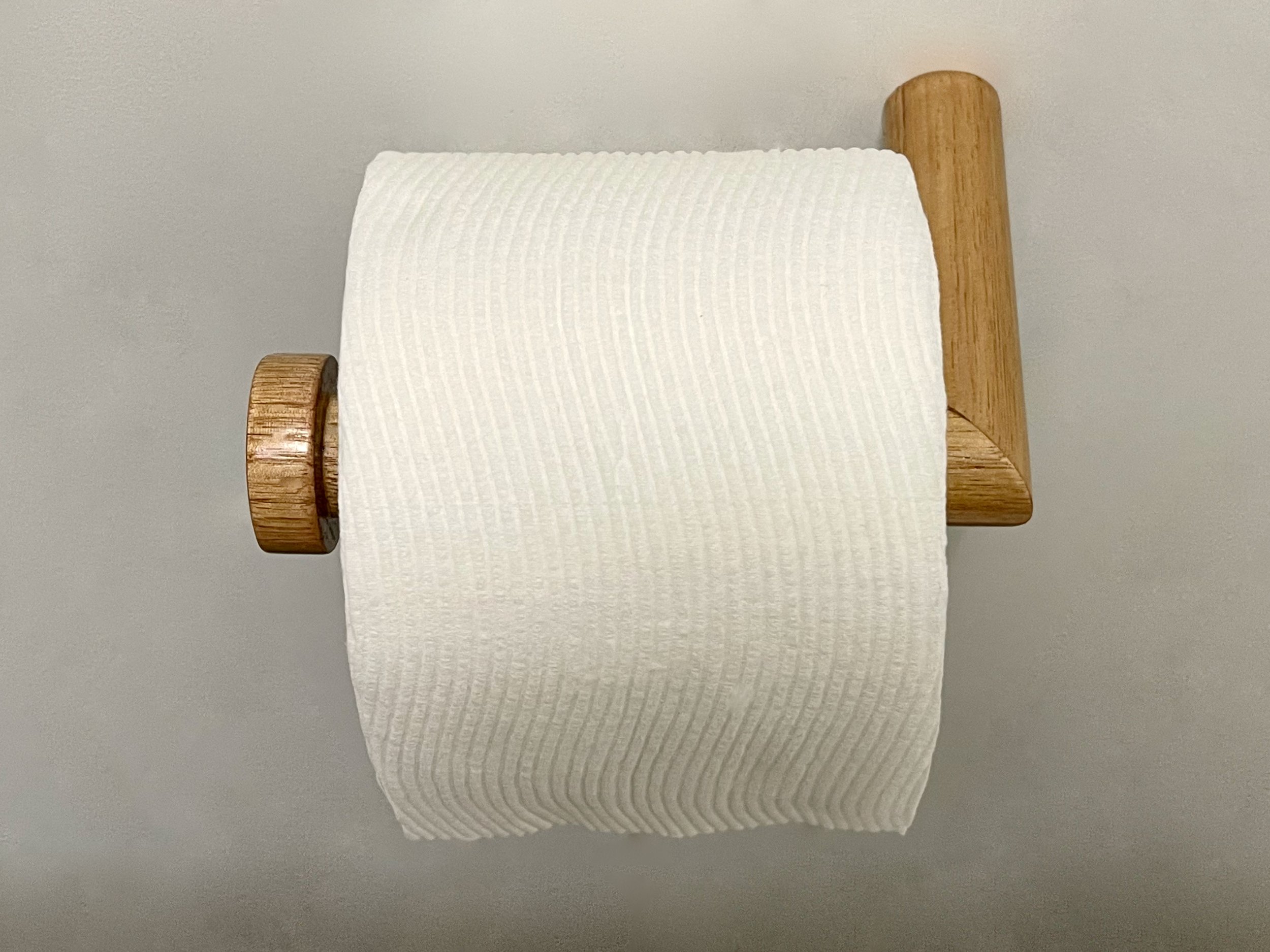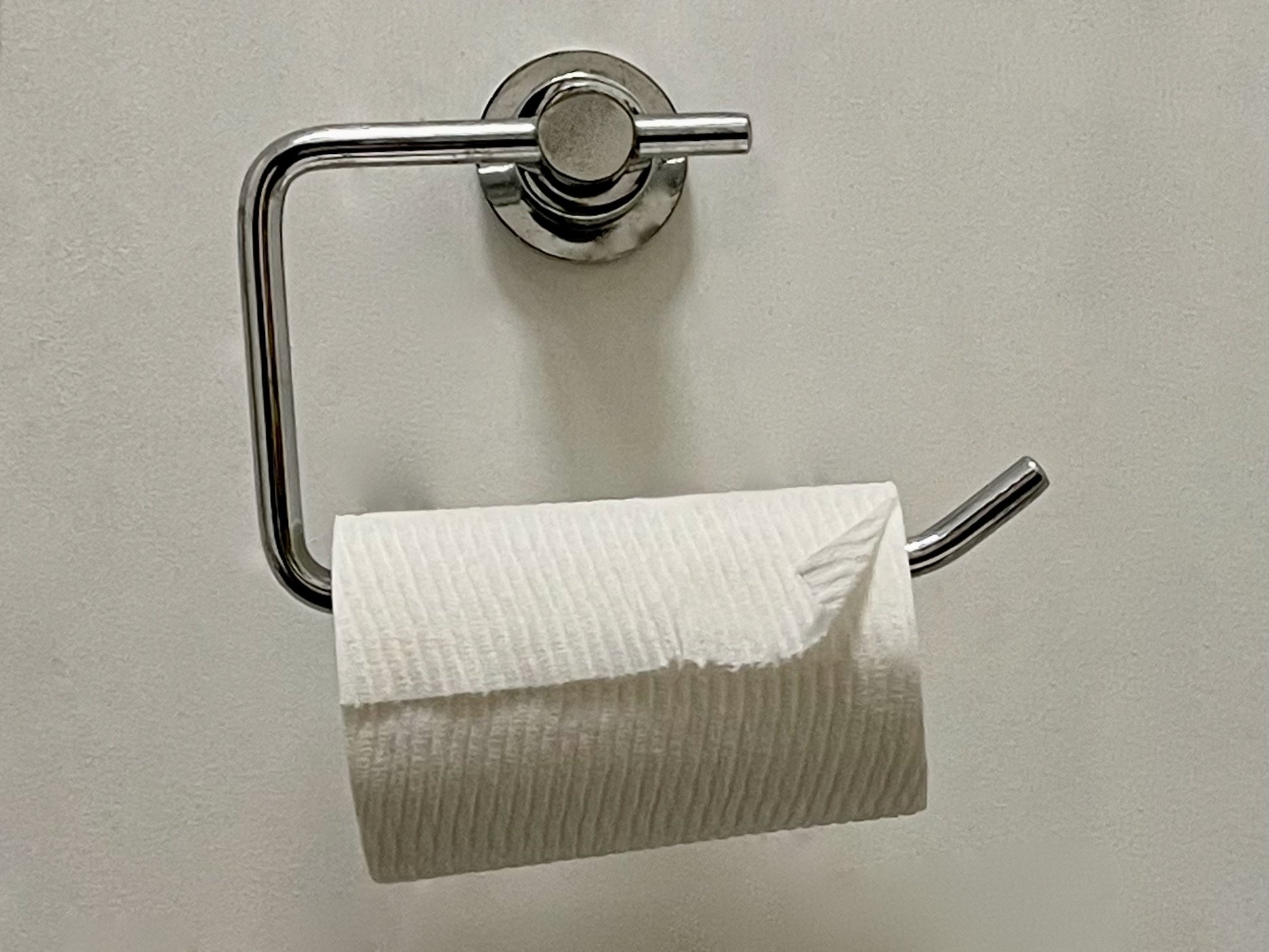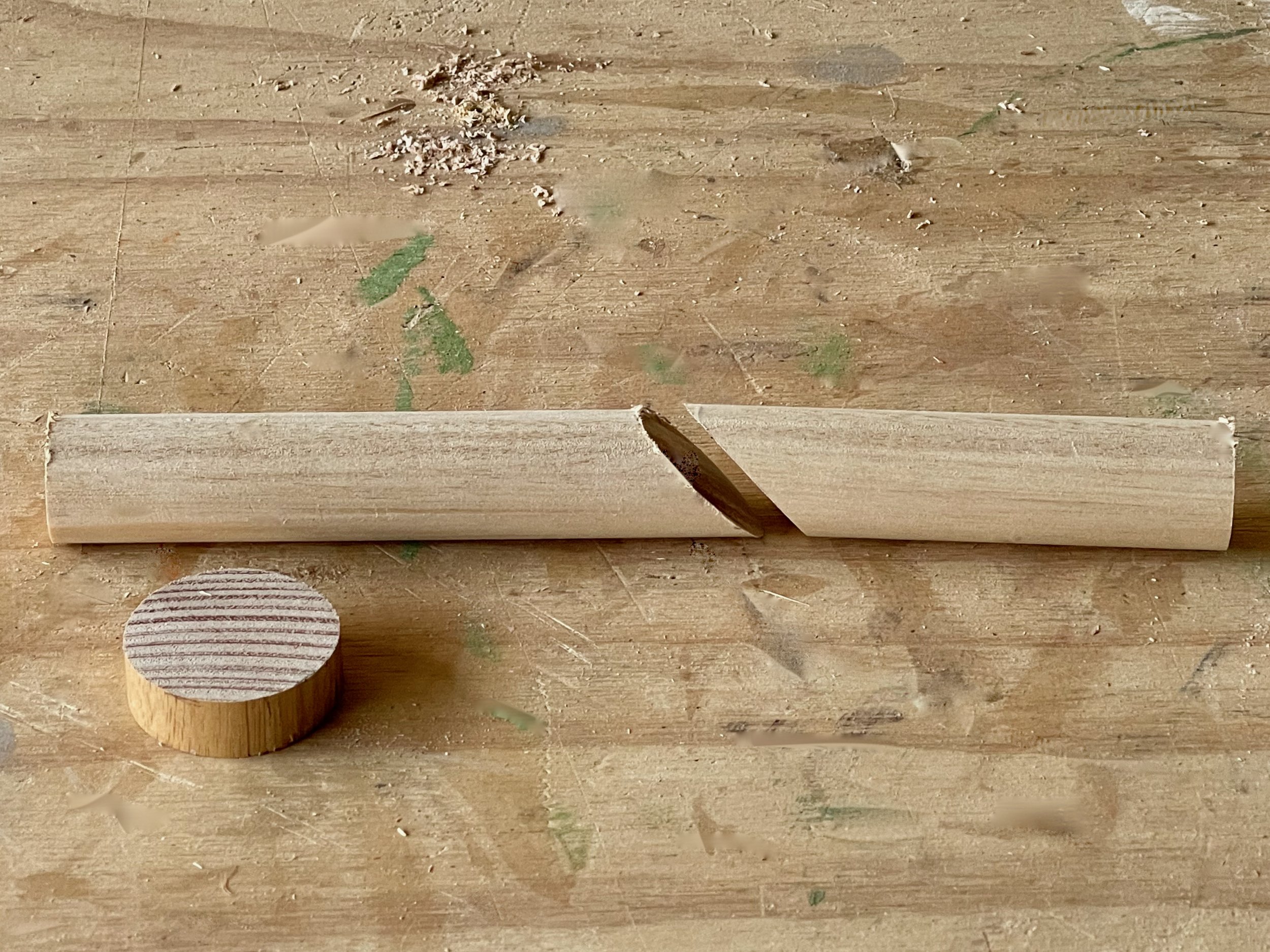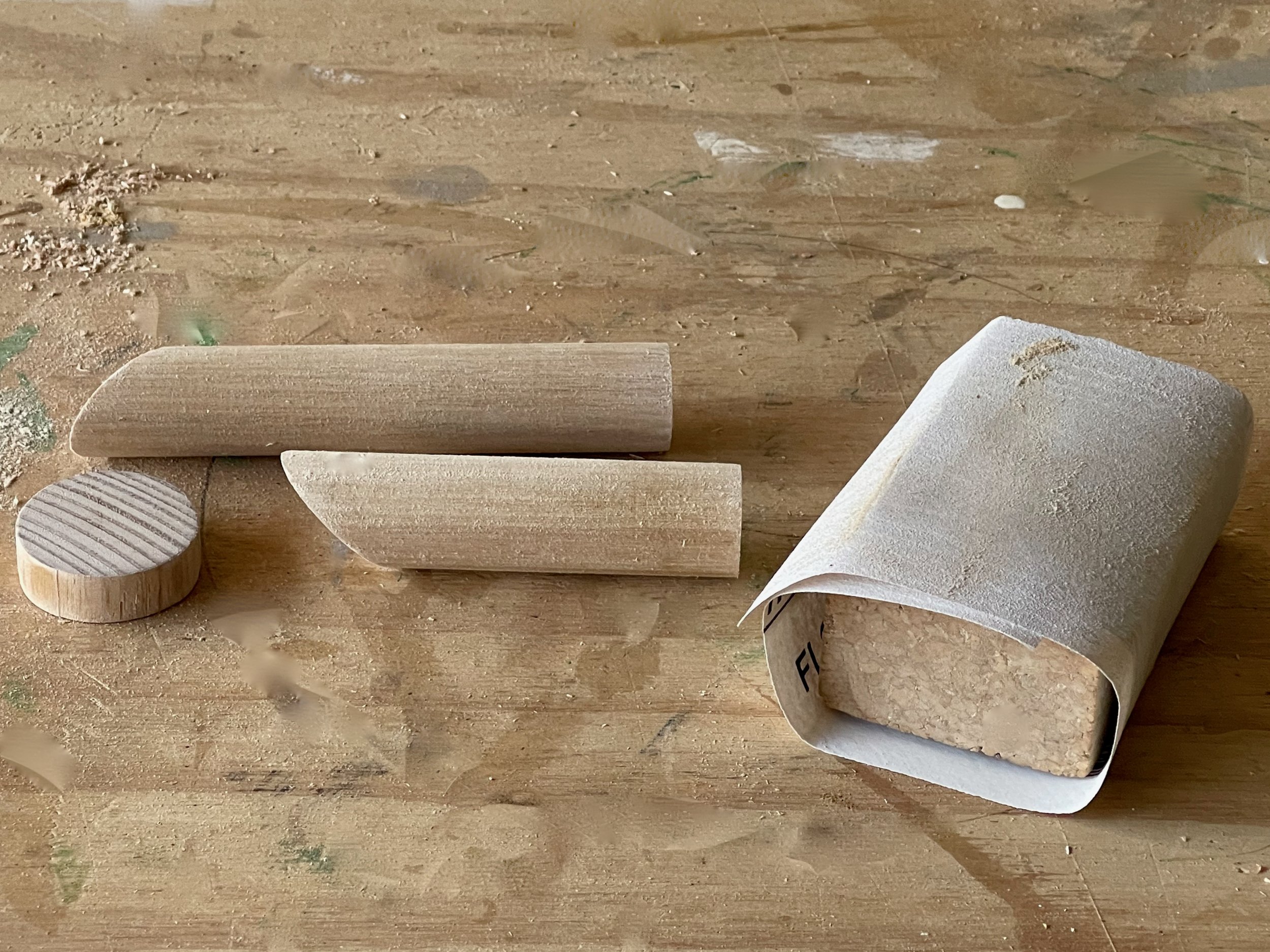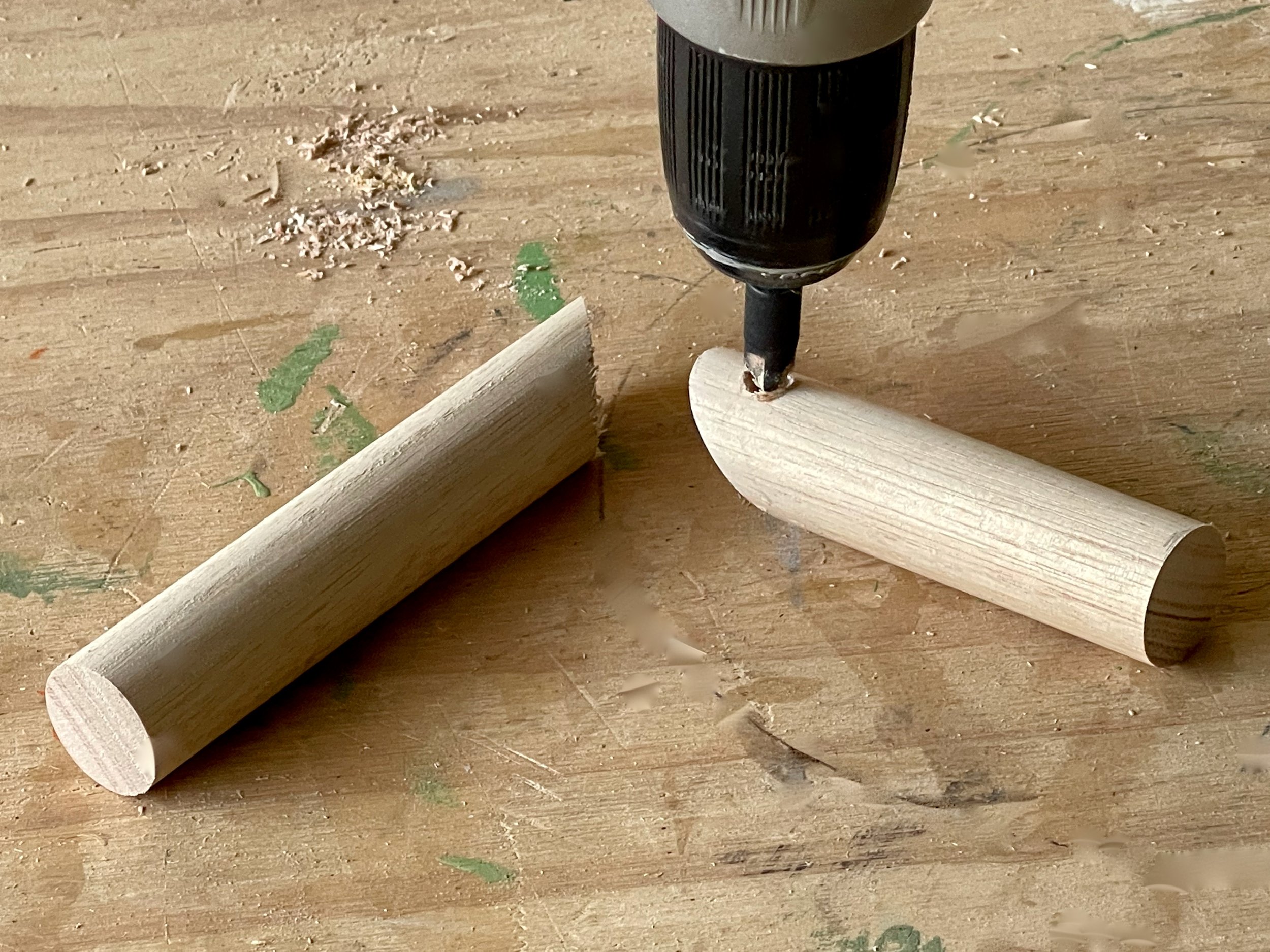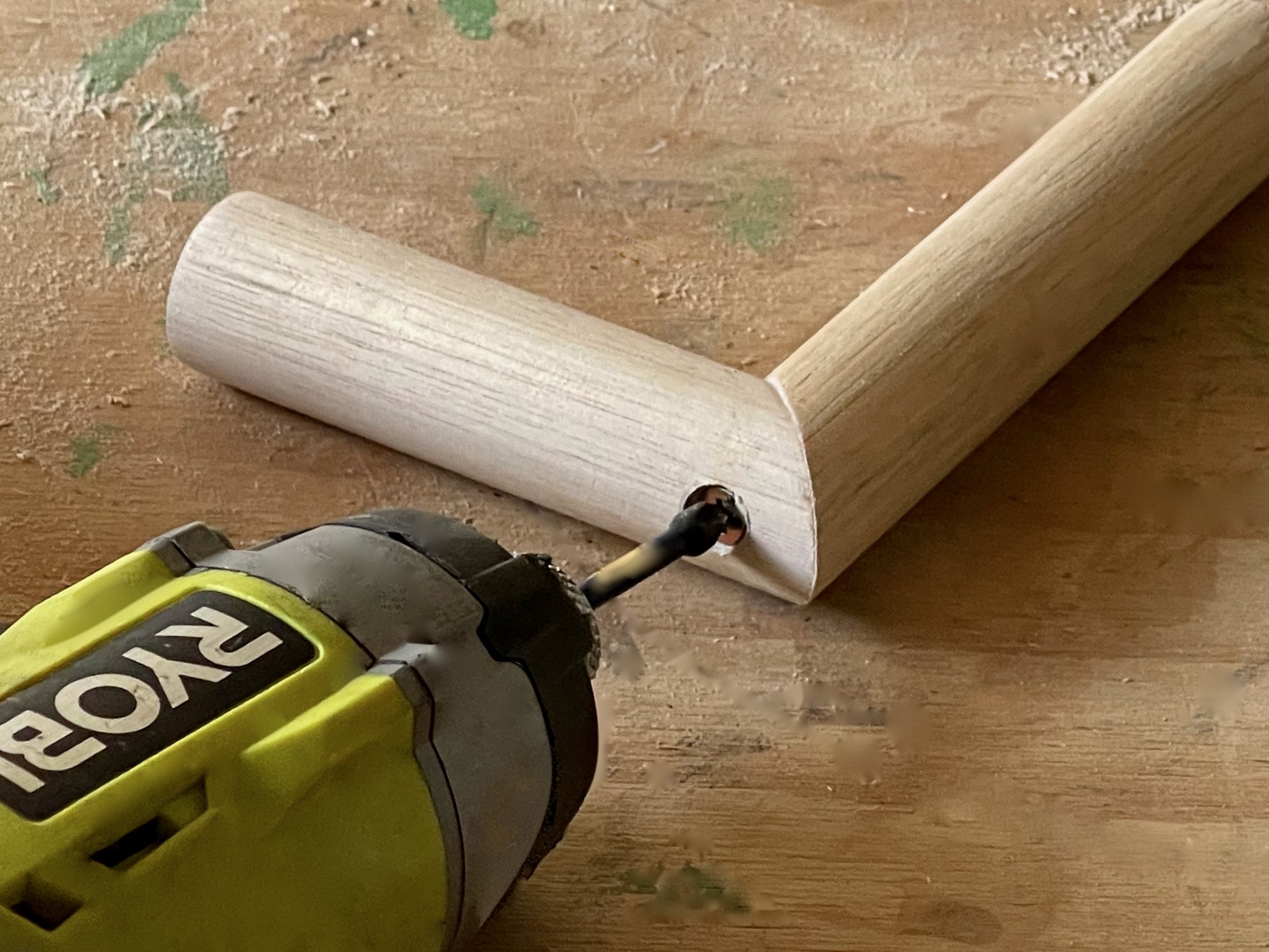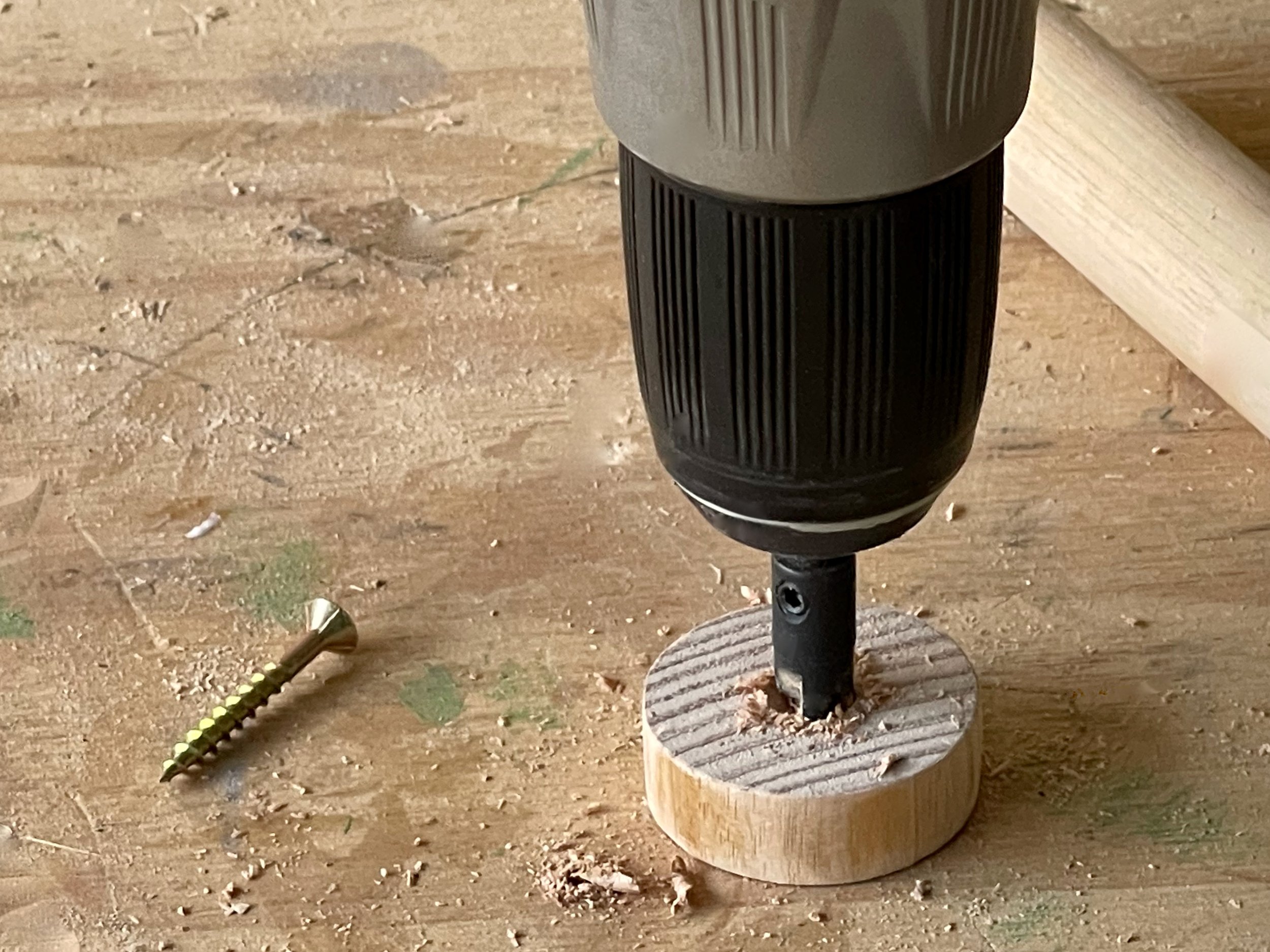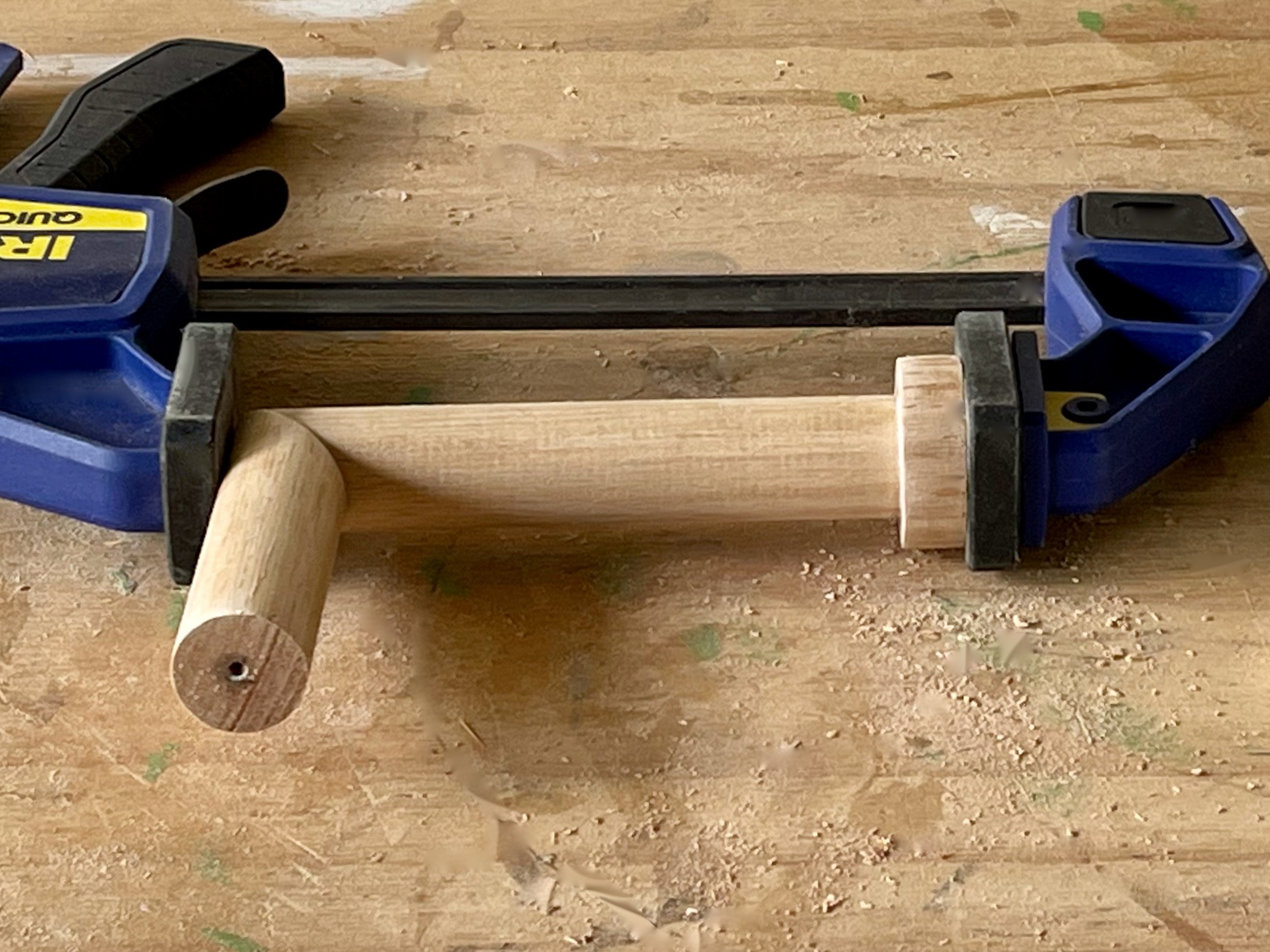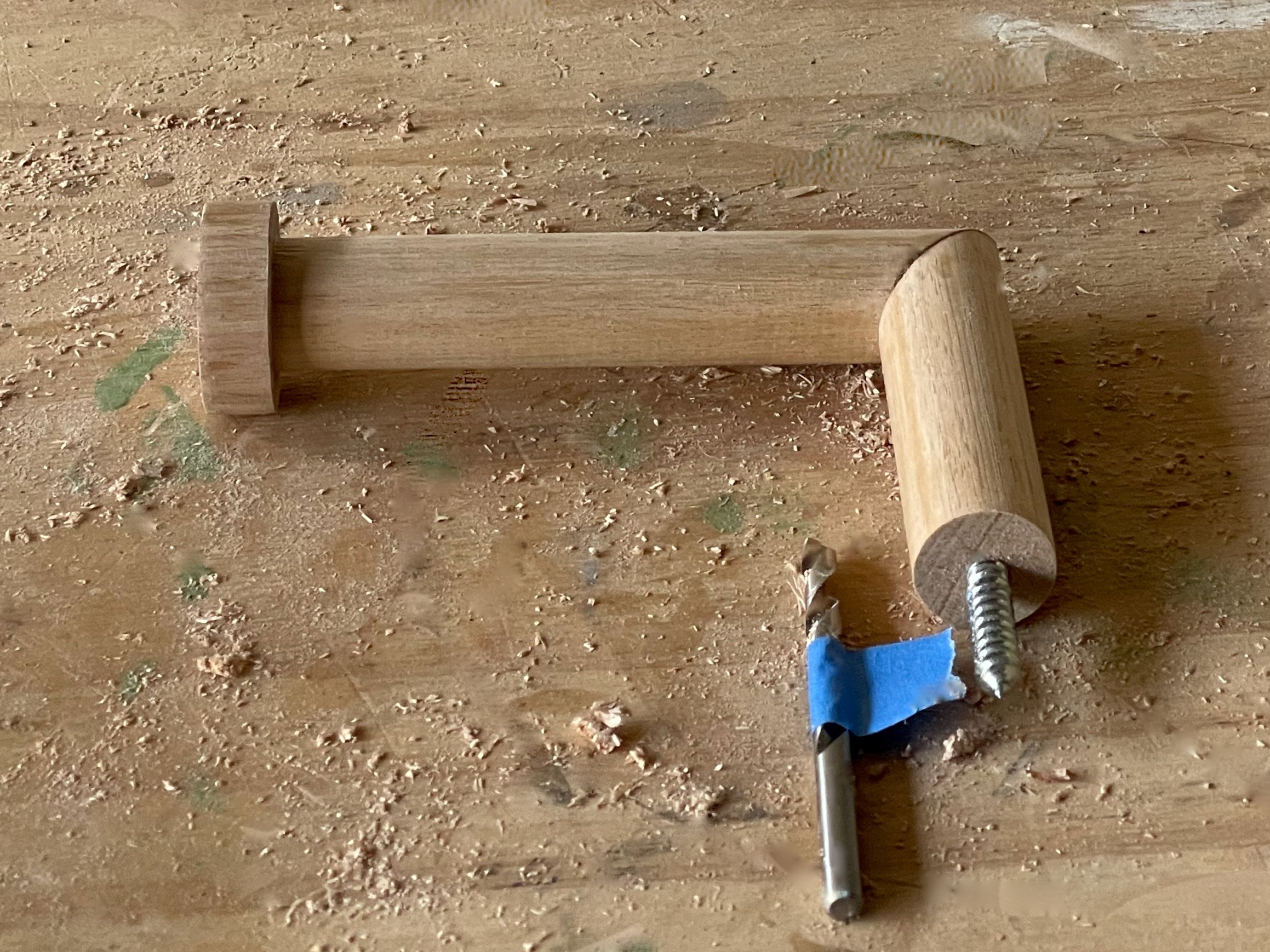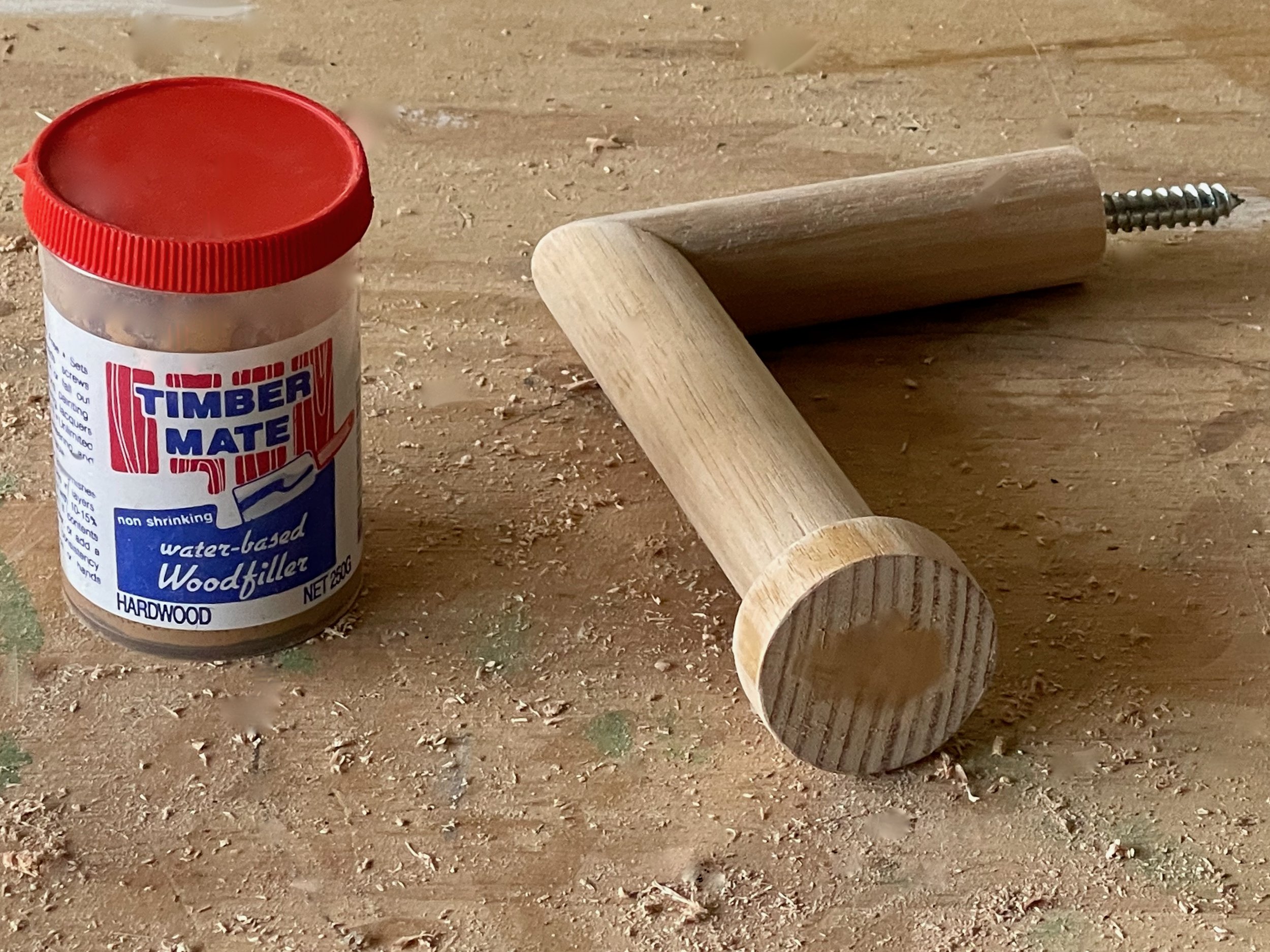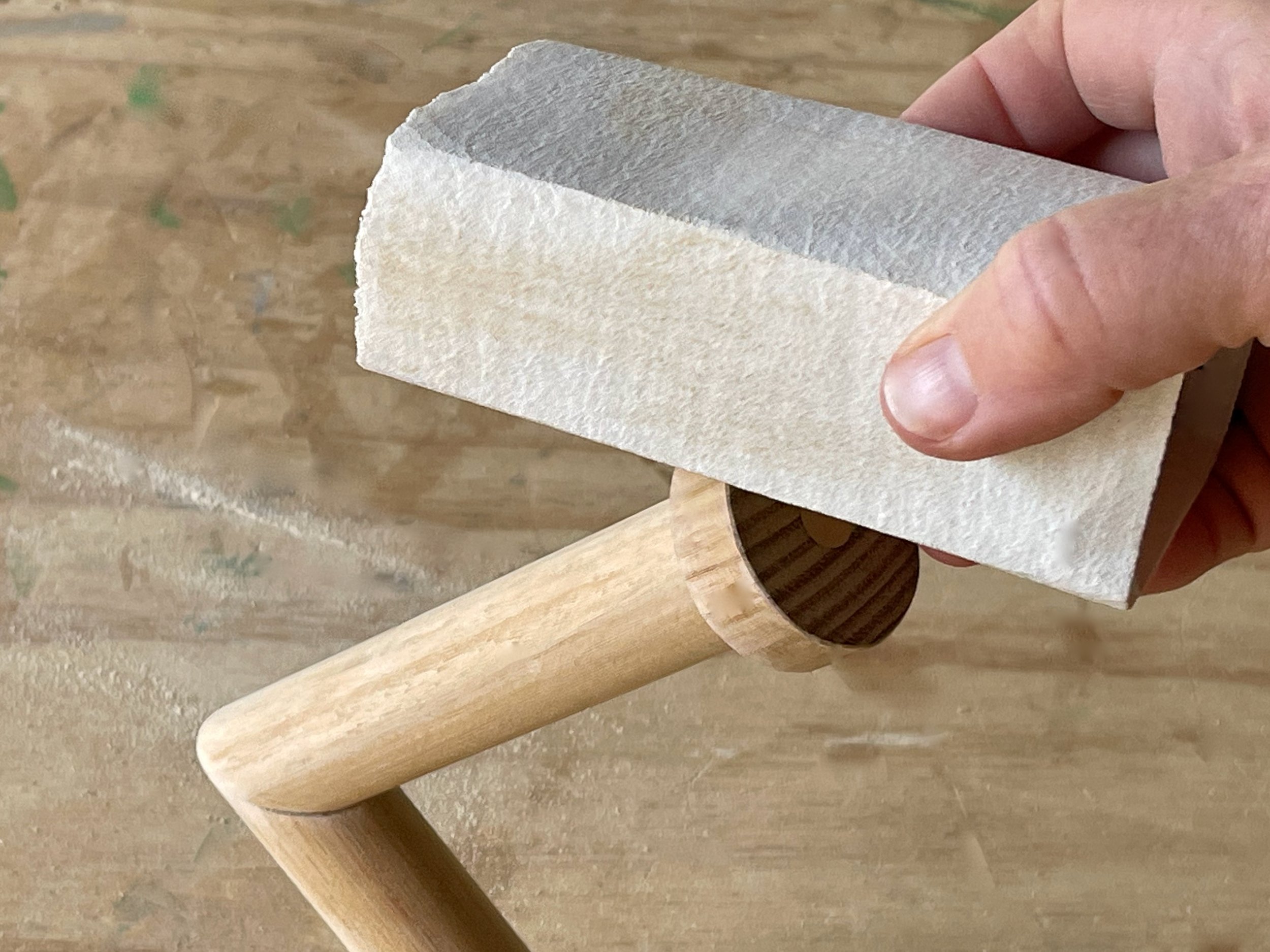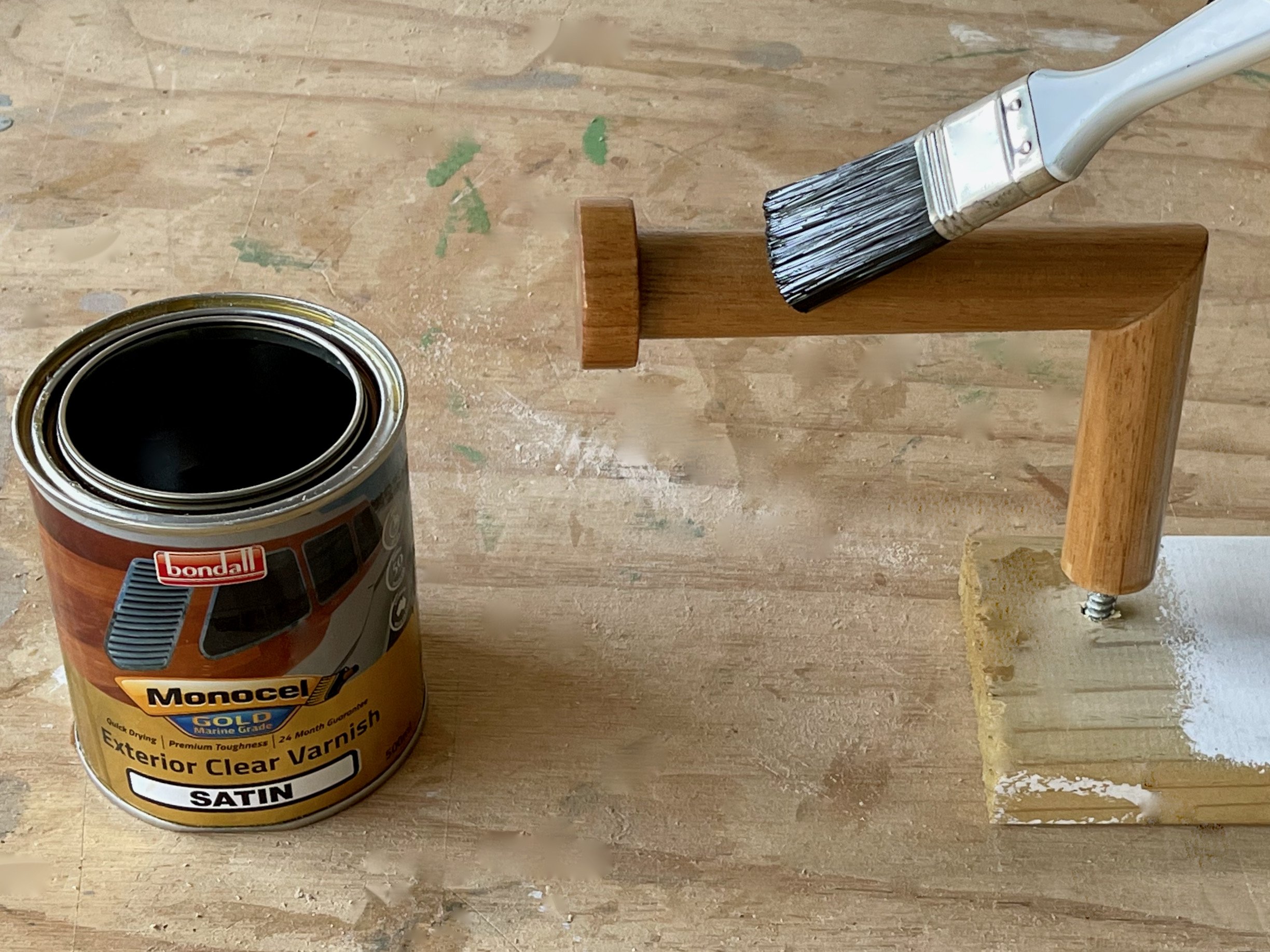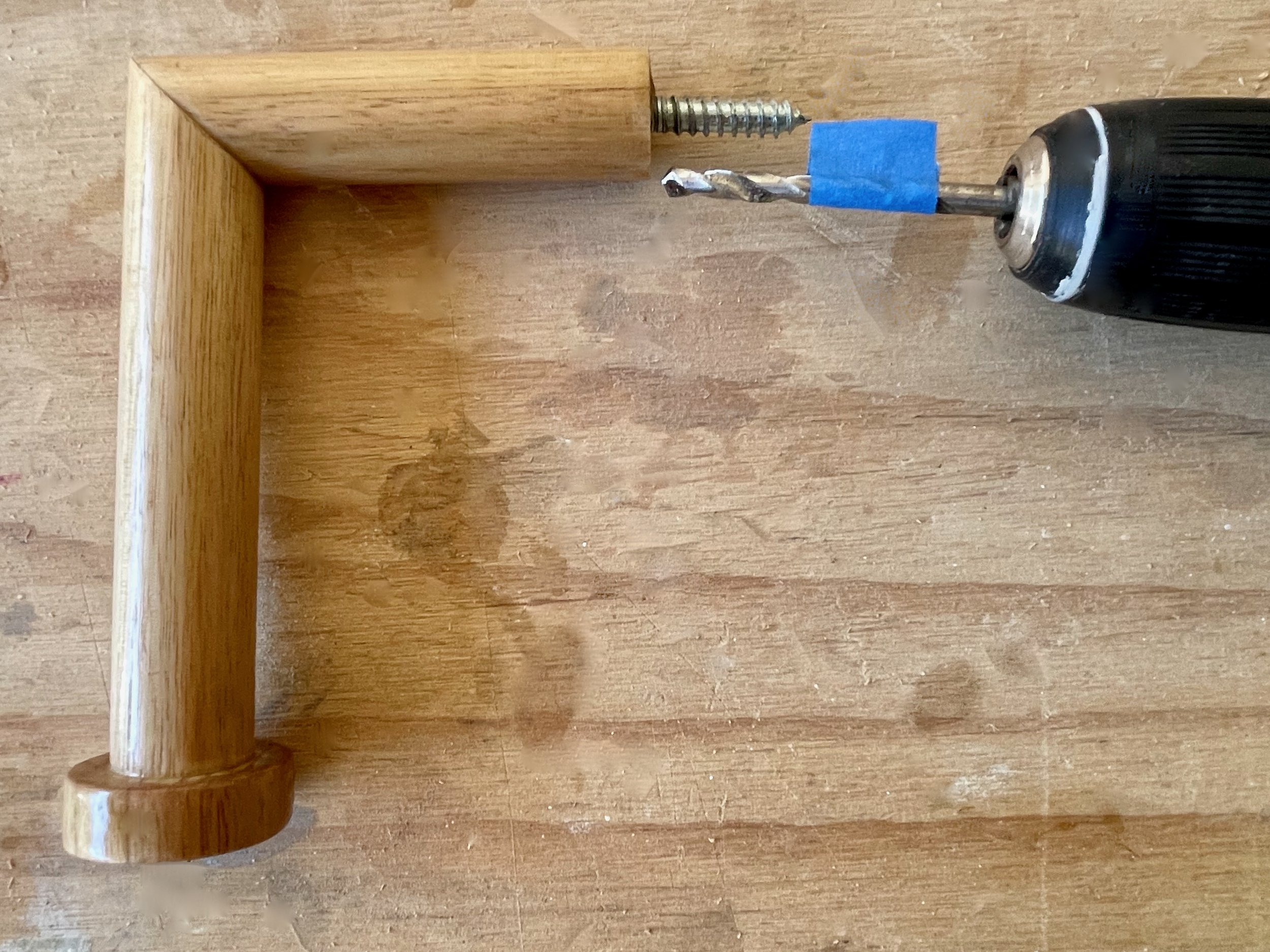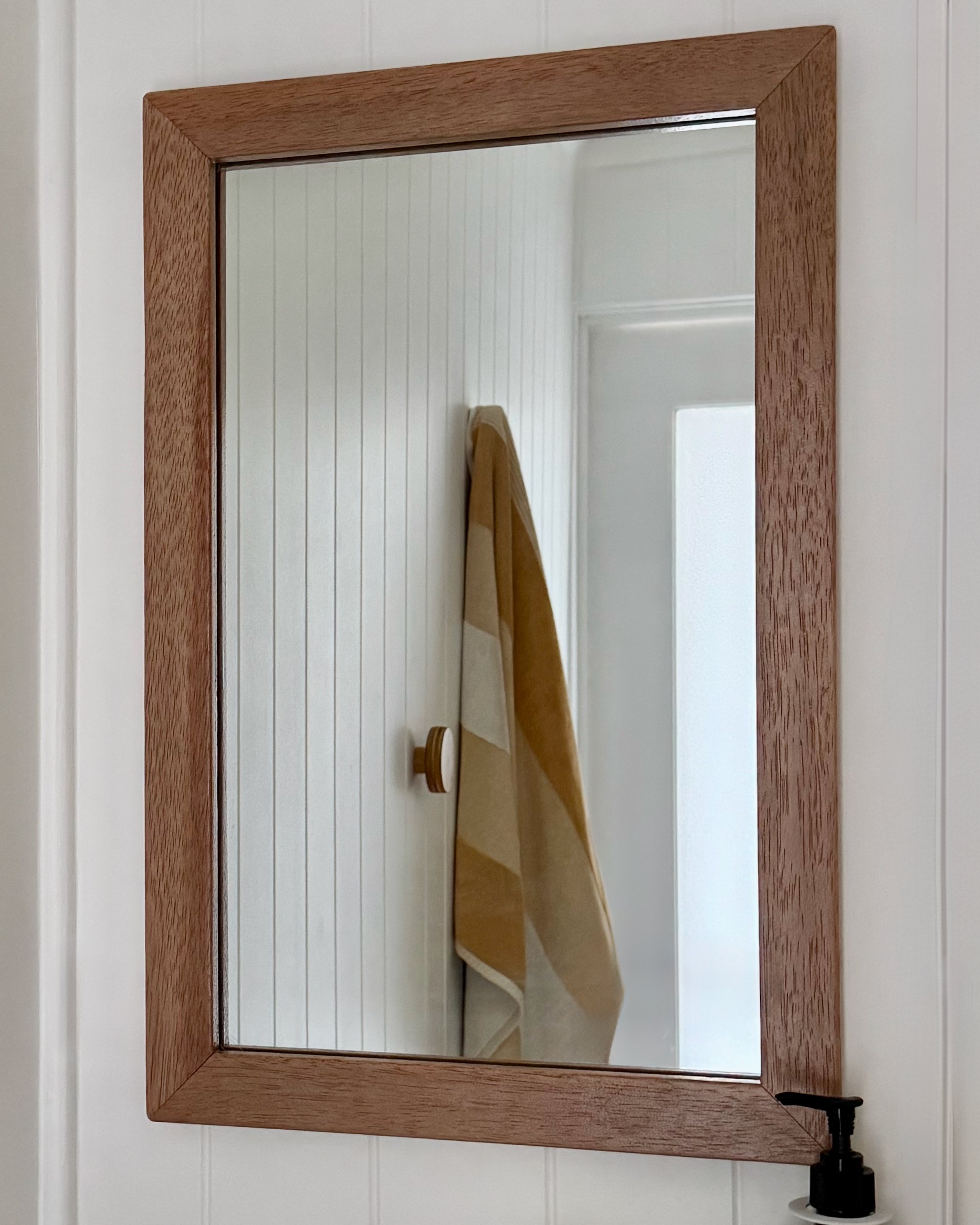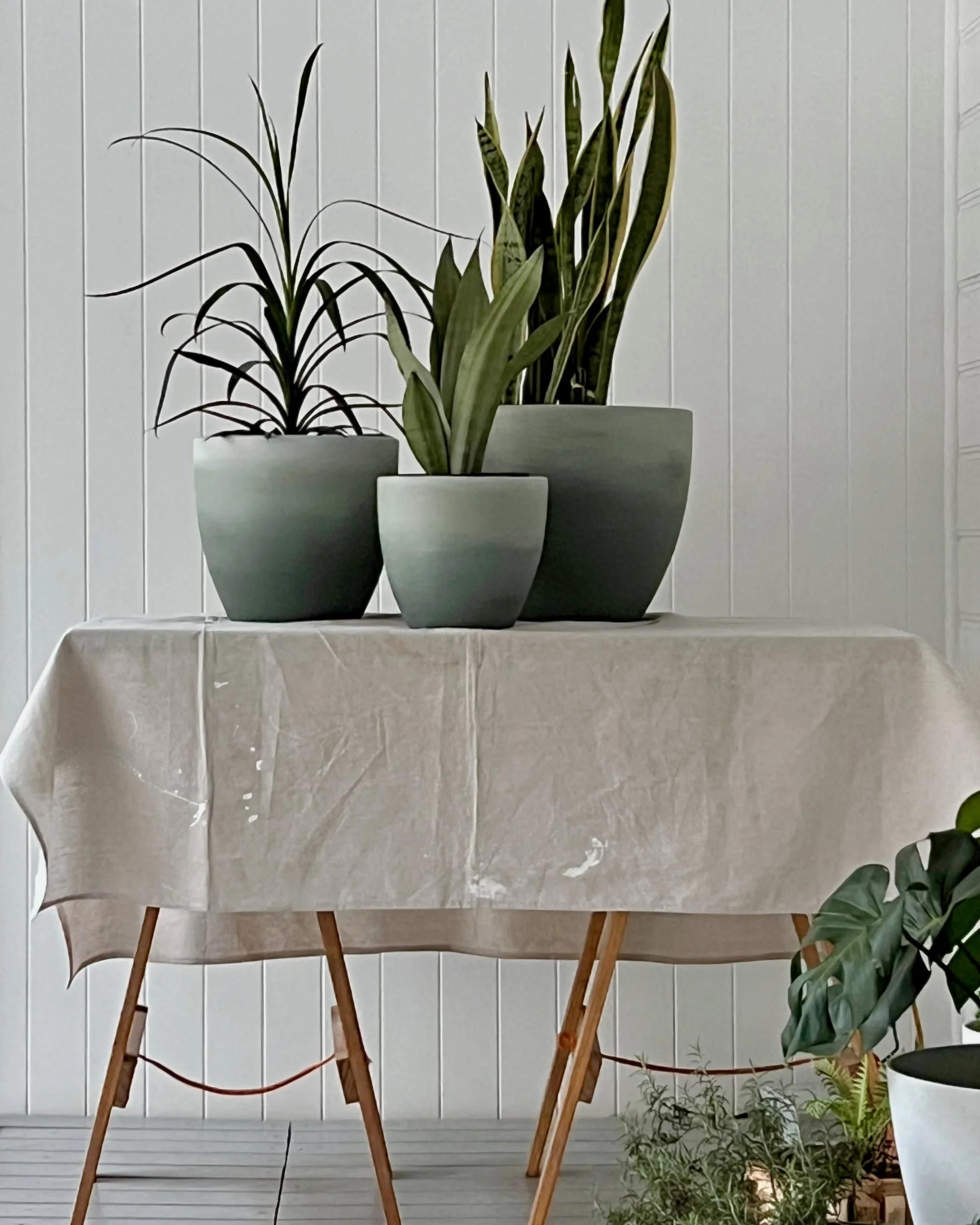Toilet Roll Holder
Natasha Dickins
I’m a big fan of introducing a little handcrafted timber into the bathroom to make it feel warmer and more inviting and have made towel hooks, a soap holder, shower caddy, and even transformed a regular $200 shaving cabinet into a designer piece.
When the flimsy old metal toilet roll holder came loose again, it was time to replace it with something more robust and in keeping with the other accessories.
QUESTION Should the end of the toilet roll hang over the top or fall to the back? Scroll to the end for a scientific explanation of the answer to this pressing social dilemma.
“The holder is 135mm wide, 100mm deep, and the stopper is 40mmm in diameter, just the right size to fit through the roll while preventing it from slipping off.”
Working on a 210mm length of 25mm Tasmanian oak dowel, I used a combination square to measure 135mm from one end as the longest part of the front rail, using the mark to cut 45° to the left with a mitre saw. I also cut a 10mm-thick stopper from 40mm-diameter dowel.
You could use a mitre box with hand saw to make the cuts.
TIP Depending on your preferred brand of loo paper, you may need to use smaller 35mm dowel for the stopper.
I sanded the ends with 120-grit abrasive paper to remove breakout from the cuts, then sanded all over with 180-grit for a smooth finish.
TIP Click through to see how I use a sanding block.
After drilling a hole through the short piece, 10mm from the end, using an 8G combination countersinking bit, I drove in a 40mm countersunk timber screw then removed it…
… to apply Bondcrete woodworking adhesive to the end grain. I rejoined the pieces with the screw, making sure the head finished below the surface.
I countersunk through the centre of the stopper, drove in a 40mm screw then removed it…
… to apply adhesive to the end grain. I rejoined the pieces with the screw, making sure the head finished below the surface.
TIP Use a quick-grip clamp to hold the piece while drilling.
I drilled into the end of the short rail with a 6mm bit…
… to install a M6 x 50mm dowel screw for attaching to the wall.
TIP Click through for a short, detailed video on how I used dowel screws to hang a curtain rod.
I sanded the screw holes to remove breakout then smoothed over them with timber filler.
TIP Timbermate Wood Filler in Hardwood is the best colour match for Tasmanian oak.
Once the filler was dry, I sanded all over with 180-grit abrasive paper to remove excess filler and round-over the edges slightly.
After wiping away the dust with a damp cloth, I applied two coats of clear Monocel Gold in Satin with a small paintbrush, leaving it to dry after each.
TIP Drill into an offcut with a 6mm bit to install the dowel screw and hold the piece while working with the marine-grade varnish.
I set up the drill with a 6mm bit, using tape to indicate the depth of the dowel screw. Then drilled into the wall stud behind the sheeting and twisted the holder in to finish hard up against the wall.
TIP Always secure into a wall stud to ensure the screw doesn’t pull out.
According to ‘science’, the correct way to hang a toilet paper roll is with the end over the top. Hanging down the back, to be reached from underneath, apparently increases the chance of collecting and spreading bacteria. Check out the proof in this Better Homes & Gardens article.
Are you including handcrafted accents in your bathroom?
Tag me on your project and follow more of my DIY journey on Instagram for tool tips, home improvement and simple building projects.
